Adenoid cystic carcinoma (ACC) and squamous cell carcinoma (SCC) can both occur and coexist in cervix. ACC is exceptionally rare and aggressive representing <1% of cell cervical cancer. ACC is best known as a neoplasm of salivary gland but can arise in other organs. Within the reproductive tract, ACC is most common in the bartholin glands and far less encounter in uterine cervix. Till date there have been few reports of co exitsting ACC and SCC of uterine cervix.
ACC generally has a high propensity for local recurrence and distant metastasis. Thus this disease need to be differentiated from the other less aggressive cervix carcinoma.
Here we encounter a case of 58 year old lady with history of bleeding per vaginum. Radical hysterectomy with bilateral Adenxa was done. On gross examination a large exophytic infilterative growth measured 5x4x3 cm involving all four quadrant of cervix noted.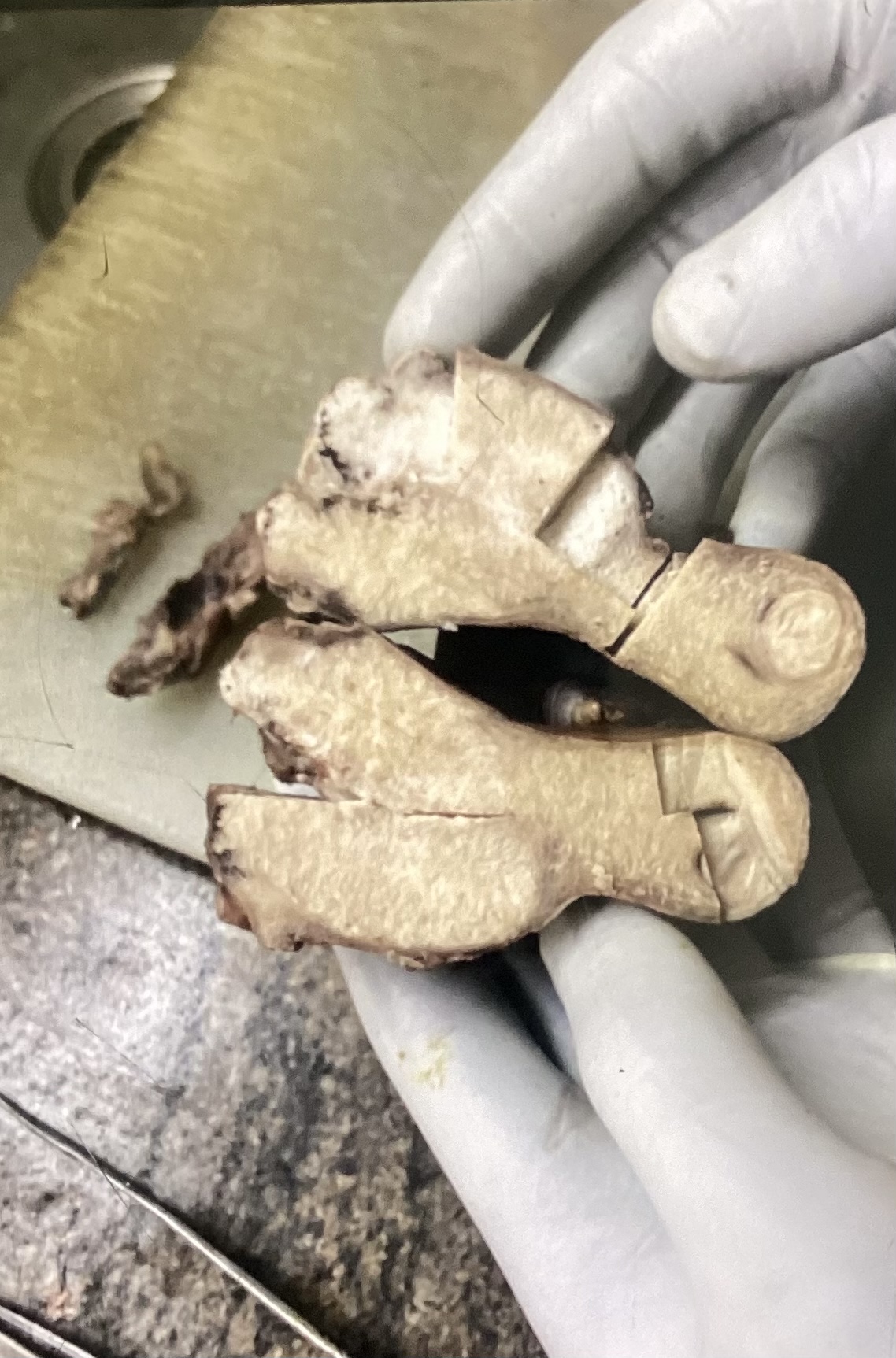
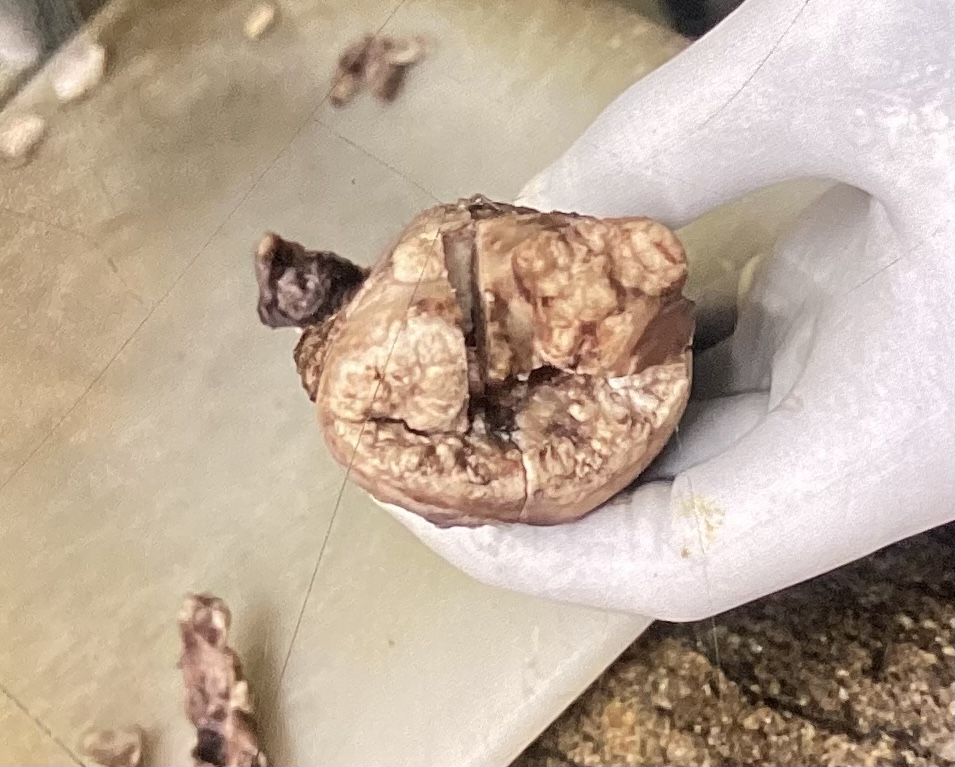
On HPE examination the tumour is composed of two components. One is characterised by sheets of neoplastic squamous cells with keratinisation represents classical picture of squamous cell carcinoma. The other components composed of cribriform and tubular growth patterns having basaltic cells compatible with classical ACC.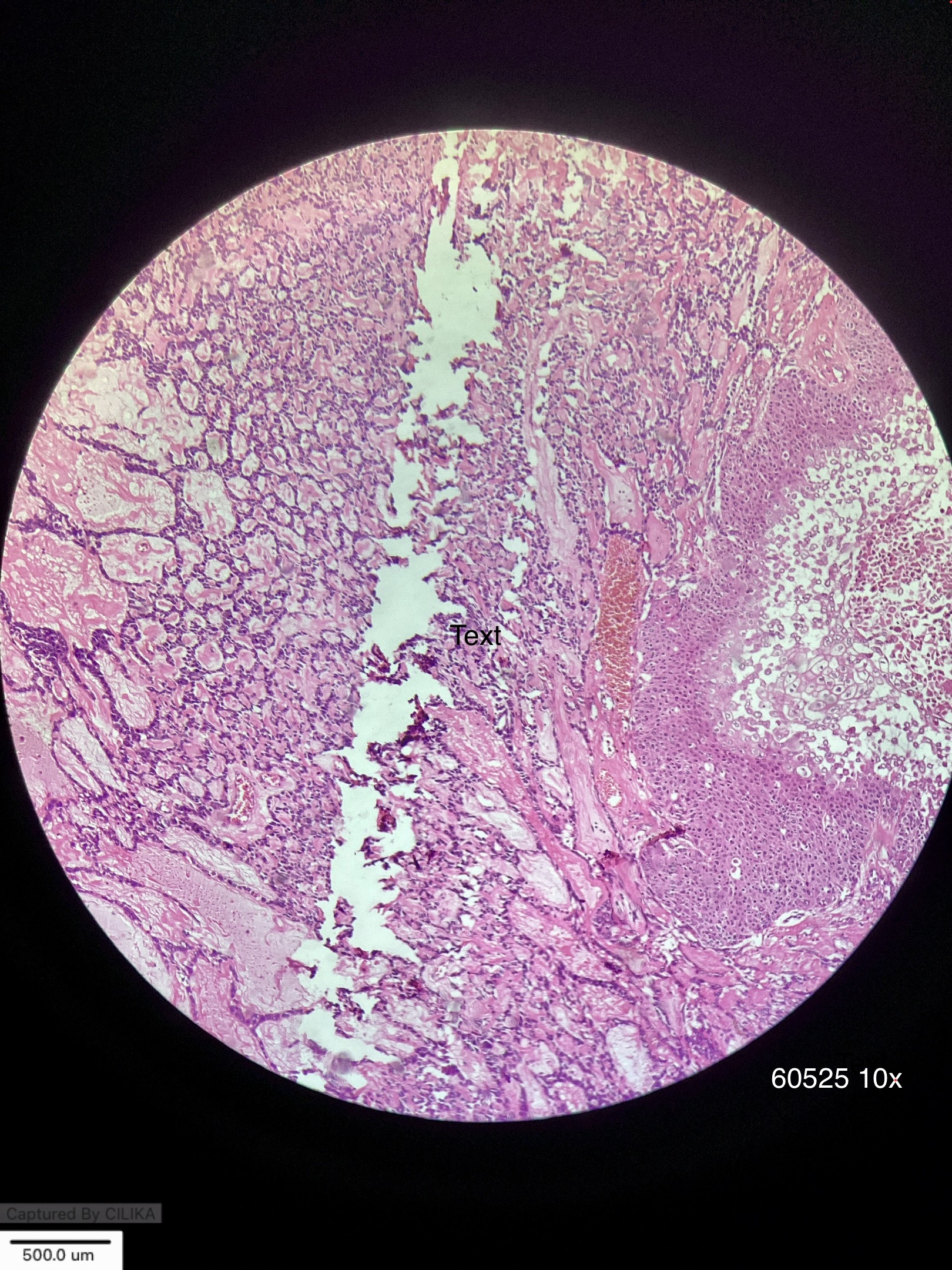
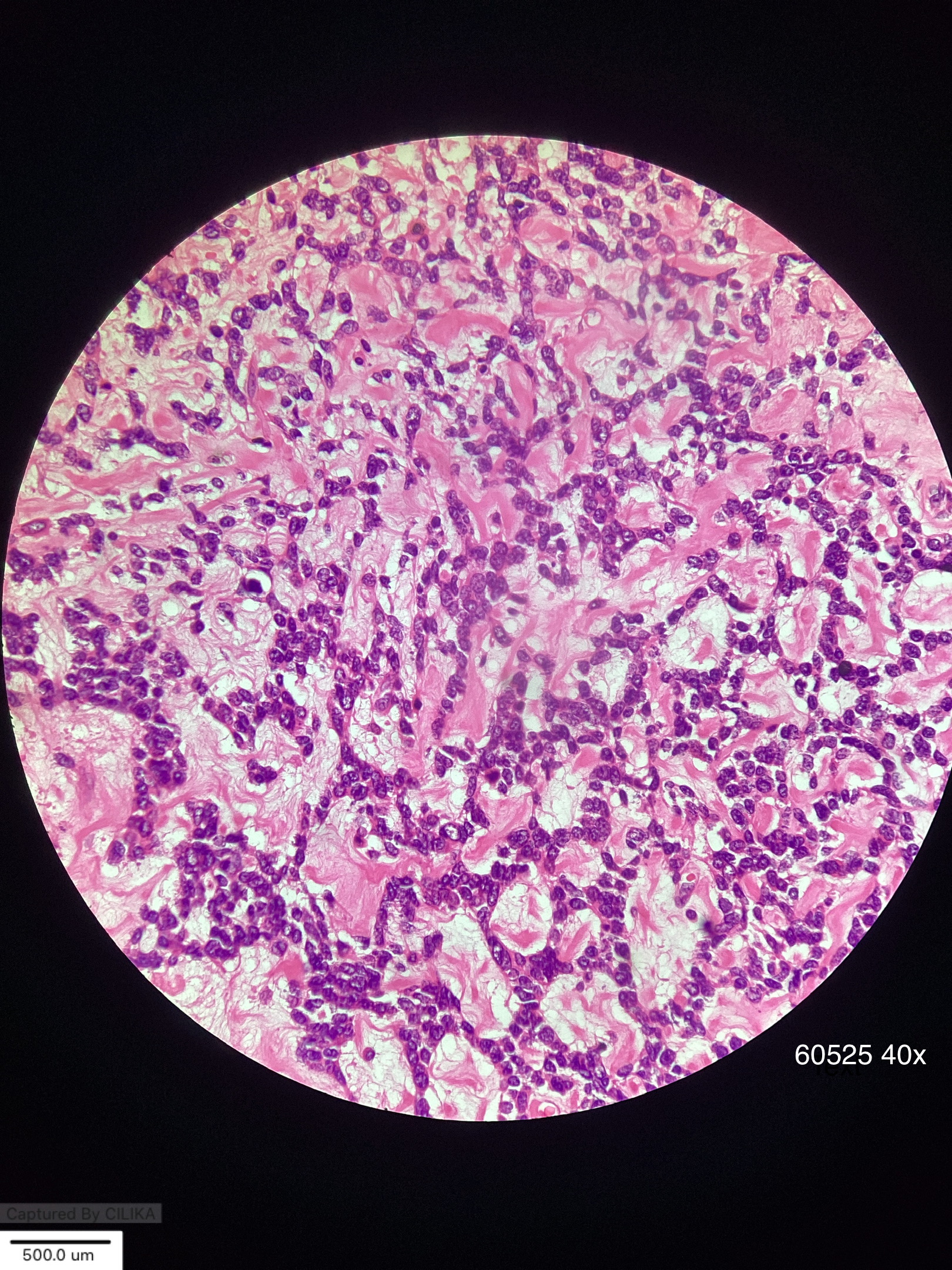
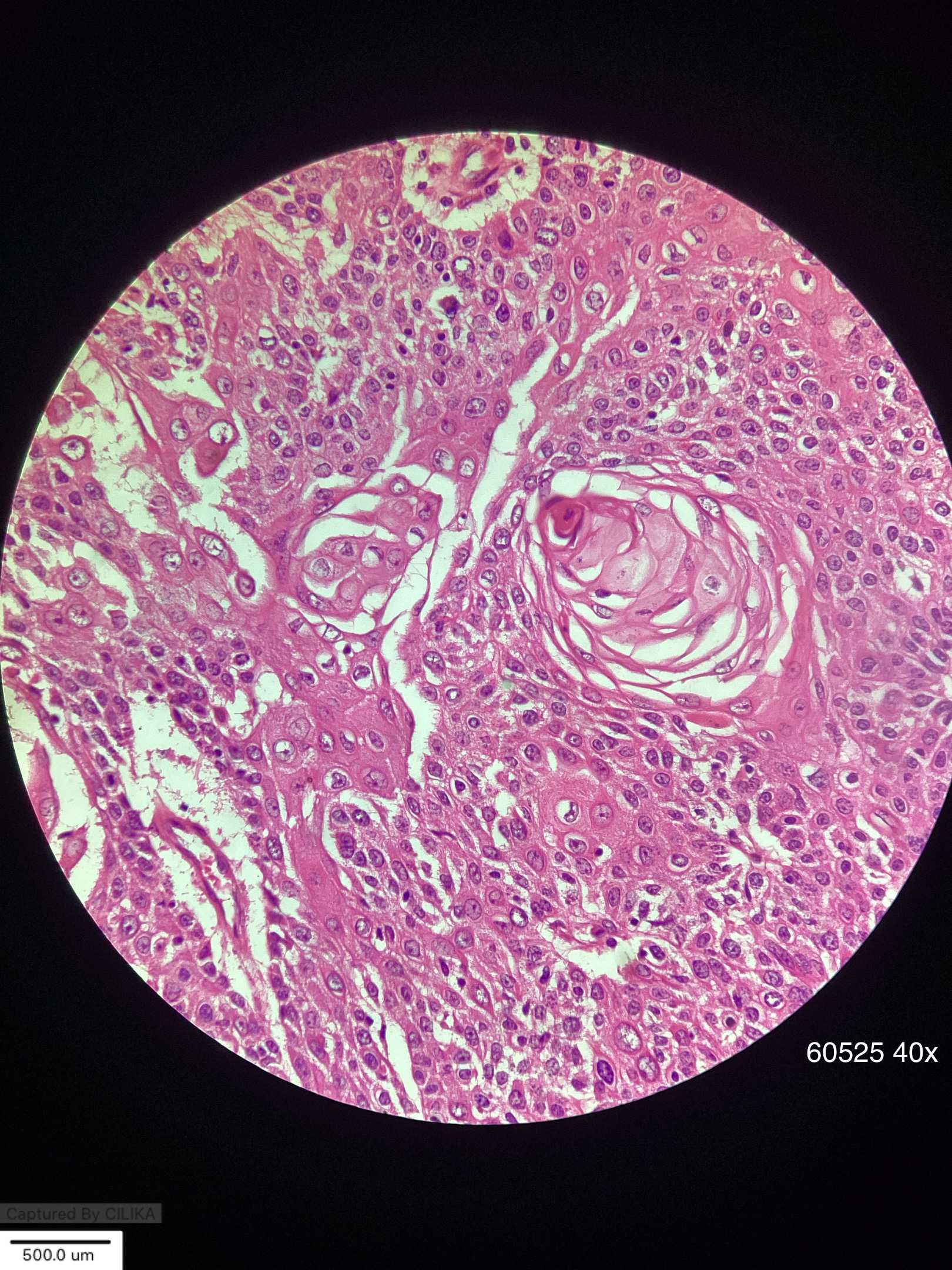
IHC plays a significant role in differentiation and confirmation of co existence. As of SCC are positive for p63 and basaltic cells are positive for CD117 and S 100.
Early diagnosis and awareness are crucial, particularly an elderly women presenting with cervical lesions. Although rare, ACC should be considered in differential diagnosis due to its aggressive nature and poor prognosis.

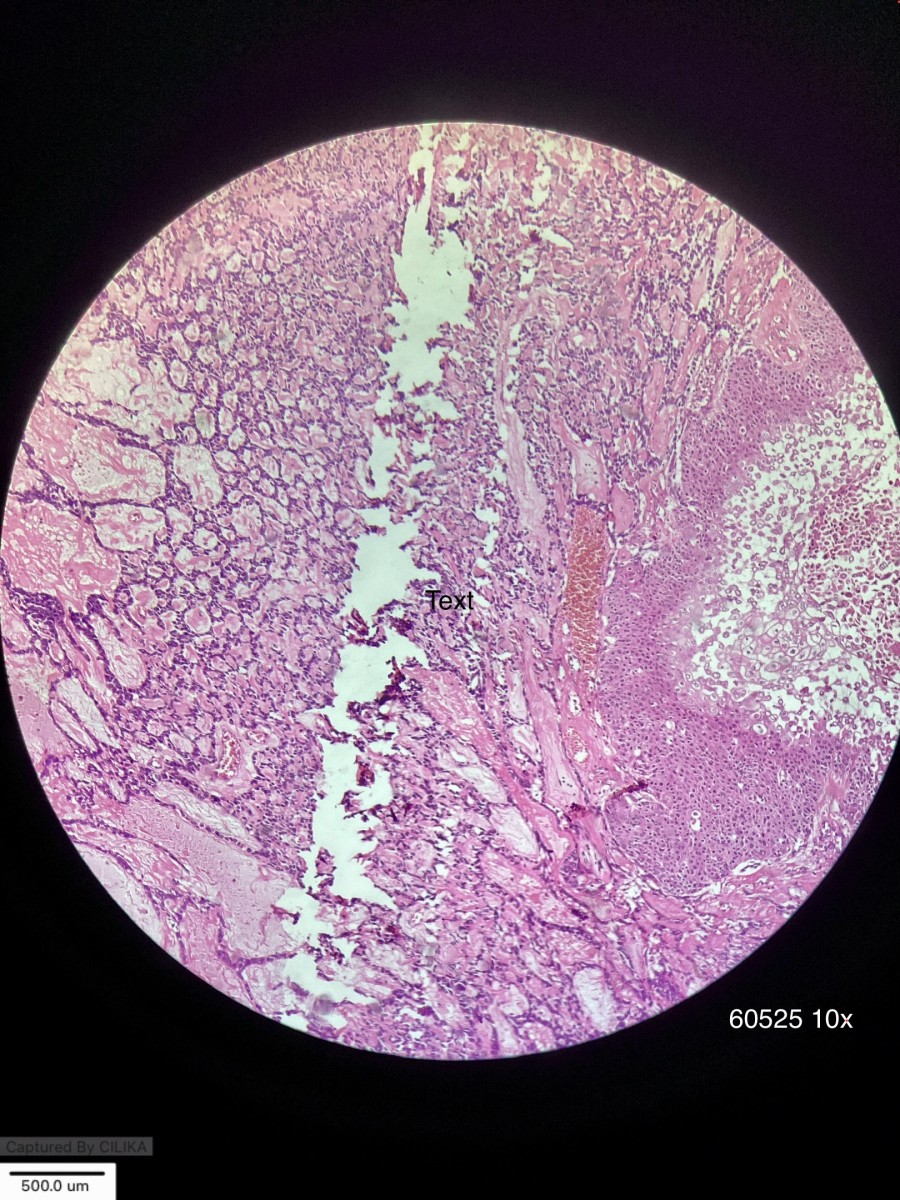

Comments (0)